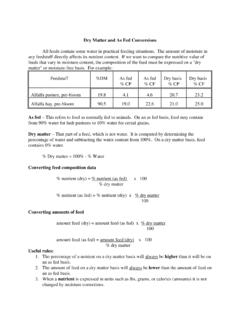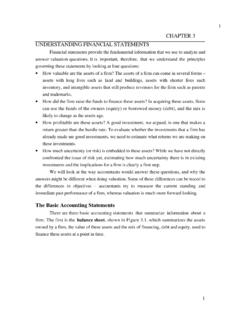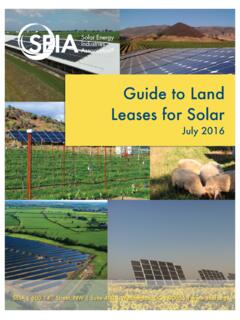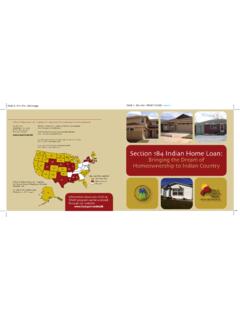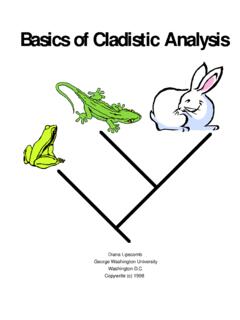Transcription of The Basics of Wildlife Management - Montana State …
1 THE Basics OF Wildlife Management Dr. Jim Knight, Extension Wildlife Specialist (Excerpt from: Manage your land for Wildlife . Available from Montana State University Extension Publications. ) What is Wildlife Management ? Wildlife Management is the art and science of reaching goals by manipulating and/or maintaining Wildlife habitats and populations. This process involves many components, including the following: Your own knowledge and understanding of Wildlife population trends; Factors that influence Wildlife populations; The interaction of Wildlife species; The impact of humans; and How surrounding landscape affects Wildlife .
2 The Landscape Doesn t End at Your Fenceline What one landowner does to manage Wildlife will affect neighbors both near and far. For example, a landowner ban on hunting, which allows overpopulation to occur, will affect habitat over the entire range of the herds. A lack of winter habitat for migratory animals will affect the potential size of the population in summering areas. To be an effective Wildlife manager, you have to look beyond your own property boundaries. Few landowners have all the habitat that is occupied by a species year round, so they must consider what habitat is and is not available elsewhere when planning Management strategies.
3 Because animals will move on and off your property, your Wildlife harvest objectives will be hard to achieve if your strategy does not take your neighbor s harvest practices into account. The most effective population and habitat strategies are done in cooperation with neighbors. It s understandable that private landowners like their independence and like to make their own decisions regarding their land . On the other hand, it s worth the effort to communicate with neighbors to be sure that your goals don t directly conflict with those of nearby landowners.
4 It is also important to consider the values of your neighbors. The large deer or elk herd one landowner appreciates in the fall is not so welcome when the herd overuses spring pasture needed for early grazing by a neighboring rancher. Being a good neighbor will go a long way toward finding solutions everyone can live with. Trading grazing privileges or cooperating on harvest strategies are examples of win-win situations that are built on open communication. Carrying Capacity A piece of land can support only so many animals on a continuous basis.
5 This may be the most important concept of Wildlife Management . Underlying most Wildlife Management decisions are two key components: Manage population levels to stay within carrying capacity; and Manage habitat to maintain or increase carrying capacity. There are several factors to remember when considering carrying capacity. 1. Carrying capacity changes with the seasons. Summer carrying capacity is usually higher than winter carrying capacity. 2. Manage for extremes when considering carrying capacity. Habitat will have a higher carrying capacity in a mild winter than during a severe one.
6 3. Exceeding carrying capacity will have a compounding effect on the habitat. For example, if too many animals are present on a parcel of land , they will over-browse and kill shrubs. As a result, that same range will support fewer animals than it could have supported before over-browsing. 4. One species can affect the carrying capacity of another species. Heavy use of an area by elk may increase the browse line to a height deer cannot reach. 5. Carrying capacity may change from year to year. For example, snow depth, drought, cover and food can affect the land s carrying capacity.
7 In general, try to manage for optimum carrying capacity, which means trying to find a population level that can be maintained in good condition on a sustained basis. Habitat Management The improvement or maintenance of habitat is one of the most important things a landowner can do to enhance Wildlife habitat. Many people think locking up or preserving an area will make it best for Wildlife . While development that would remove the space Wildlife needs is certainly detrimental, activities that manipulate vegetation properly are usually good for Wildlife .
8 While some species such as red squirrels, mountain grouse and numerous non-game animals prefer older growth forests, most game animals thrive in areas that have younger stages of vegetation. The stage of growth of different vegetation communities is referred to as the stage of succession. Succession is the natural progression vegetation communities go through as they transform from bare ground to the mature forests or grasslands. Certain species of vegetation are found at the various stages of succession. Certain Wildlife species also do best using various stages of succession.
9 Succession can begin after a fire, a landslide, or any other phenomenon that results in removal of vegetation. It can also result from a pond filling in, turning into a marsh, then a grassy wet meadow, then a willow flat and eventually a wooded area. Man made activities can also set succession back. Plowing a grassland, clear-cutting a forest or using a herbicide to kill vegetation are all examples of creating early stages of succession. If a forest burns, succession normally goes back to its earliest, bare ground stage. Grasses and forbs appear first; then other plants that thrive in full sunlight emerge.
10 Gradually, small shrubs appear, eventually to be replaced by larger trees that out-compete them for nutrients and sunlight. The process then leads to a forest that is composed of mature trees with very little understory. The same process takes place when a prairie burns. Grasses and forbs that thrive in early successional situations are eventually replaced by grasses and shrubs that represent the most advanced prairie stage. The most advanced vegetative compositions of forests and grasslands are called climax stages. As Wildlife managers, landowners need to determine which stages of succession they will manage toward to develop habitat for specific species.

